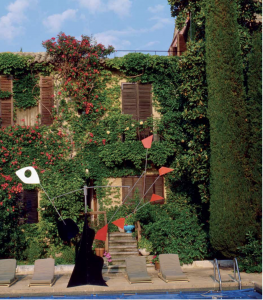Designer-artist Jack Irving discusses his grand installation celebrating the Mondrian Shoreditch’s first year anniversary
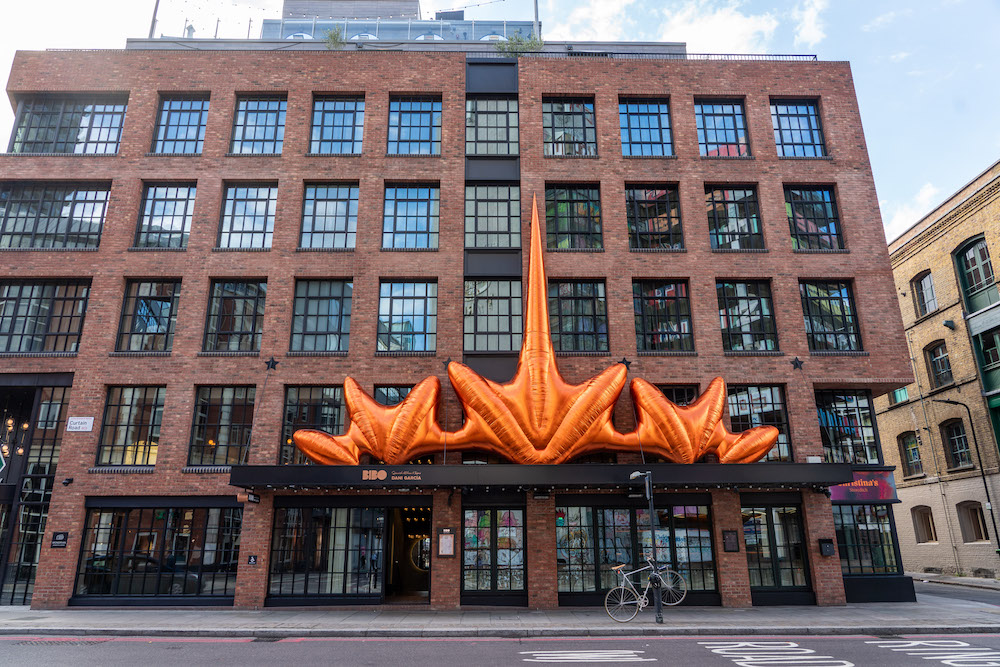
A bronze crown adorns the Mondrian Shoreditch. Or rather, an abstract inflatable rocket in mirror nylon finish sits perched on its canopy rooftop, “blasting it into the future”, courtesy of multi-hyphenate Jack Irving. The designer-artist – best known for his wearable work for Lady Gaga – was invited to install the striking 12m wide x 8m high sculpture to mark the hotel’s first anniversary this August. Titled ‘Futura’, it will stay for two months across London Fashion Week and London Design Festival, while two of Irving’s archive holographic dresses worn by Gaga and Paris Hilton will be displayed in the lobby’s Infinity Room for guests to view, and the Curtain Club for members.
To celebrate the milestone, Port caught up with Irving to discuss the project, as well as the inspiration he draws from the alien forms of the deep sea.
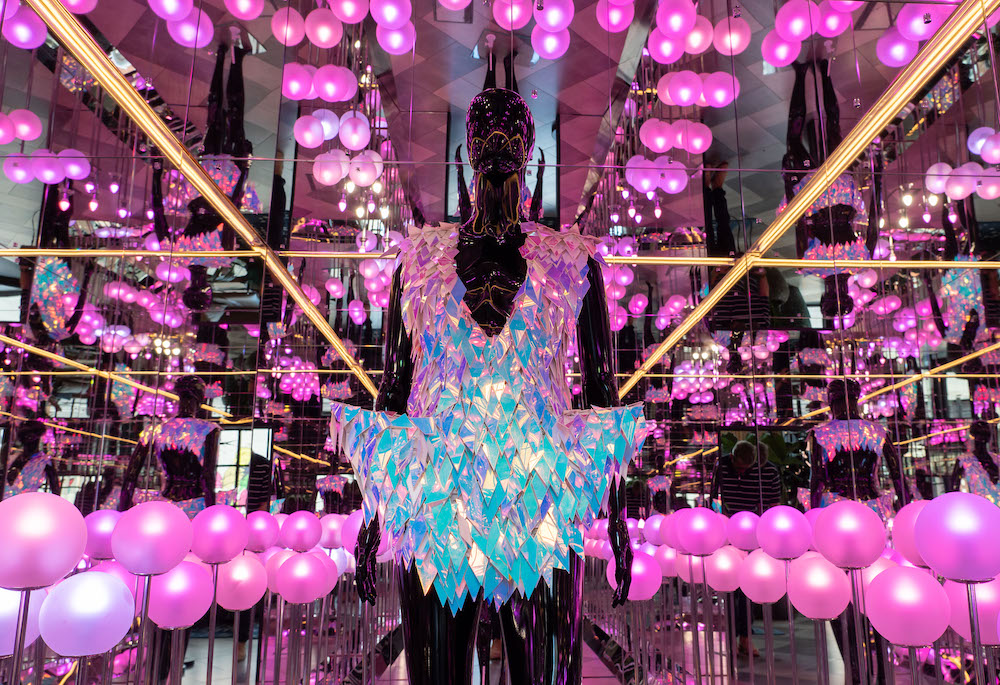
What are the different considerations you have as a designer when dressing a building, rather than a body?
In general, my work is more to do with wearable art rather than strictly fashion. When I started out, my ambition as a teenager was always to be a set designer. The pieces that I make in the sculptural body form are kind of like wearable art, so, taking it off the body is almost going back to how I used to work. With regards to the Mondrian, I wanted to create a piece that compliments the building in the same way you work with the form of the body – without overtaking it. The principal was quite similar; it didn’t feel like that much of a departure.
I was put in mind of Jeff Koons’ balloon dogs – were there any artists, objects or artworks that informed Futura?
I mean, Jeff Koons is obviously the king. I’ve always been drawn to the boldness and unapologetic side of Koons. My absolute idol is definitely Es Devlin; she’s the absolute queen of the design world. I’ve been a fan of her since I was 12, tracking her very early career when she was doing small-scale theatre tech design, and now she’s superwoman. I would say I draw from the feeling of these artists rather than trying to emulate them. Going forward, I’d love to work on even bigger scales than this.
We are all products of our environment; do you think the neon colour, glitz and illuminations of your hometown of Blackpool has influenced how you approach design?
Entirely. Growing up, my biggest aspiration was to work in the shows of Blackpool. I didn’t really know anything else, or that there was a wider world out there. I was so engrossed in that environment and basically grew up as a stage show kid. I was in dance school from the age of eight, training to be a professional dancer – tap, jazz, modern. By the time I was 14 I was obsessed with the behind-the-scenes side of it, and came off the stage to focus on costumes and sets. Then I started working for the world’s longest running ice skating show. It’s still going today – have you heard of The Hot Ice Show?
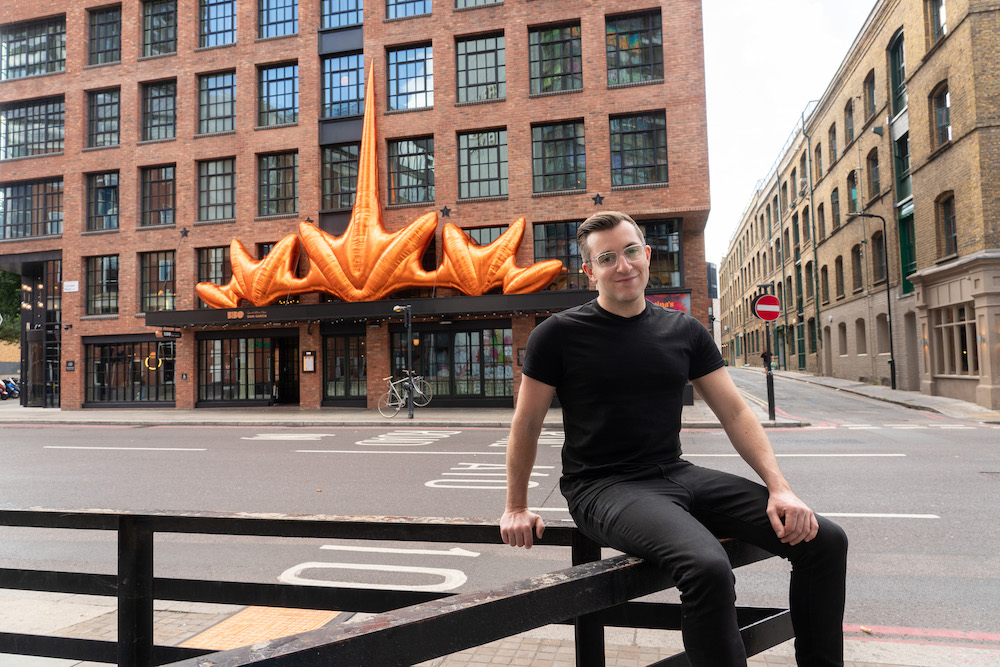
I have not, I’m like Bambi on ice. My center of gravity is poor and I normally bruise my coccyx any time I go near ice.
Ex-Olympic skaters from around the world, when they retire and need jobs, pretty much all go to work for this show. I was immersed in a world of making feathers and hats for it after school. That had a huge influence on me because instead of seeing friends, my priority in the school holidays was making costumes. I also assumed, in my small-minded Northern way, that everyone else who was also into showbusiness had the experience and the passion I did. But obviously that wasn’t the case. When I moved to London, I was always surprised when people told me they didn’t have an ice show in their town growing up… Those theatrics were in my blood and that’s kind of where the inspiration of my work comes from. I always joke that even though I’m telling a story through my work, every single piece is always the finale. There’s no filler, all killer.
Why are you drawn to working with reflective materials?
I love sci-fi. I’m passionate about the future and for a futuristic aesthetic, metallic and shine goes hand in hand with the showmanship and theatrical background I have, but also designing for a brighter future, a greater good.
What else inspires you?
I’ve always been inspired by David Attenborough’s nature programmes, imagining that I’m watching something from outer space. The way that he would frame these creatures is almost how one would look at an alien form. To that end, I’ve always been interested in deep-sea creatures. The sea is filled with aliens and I’m always surprised by the amount of funding in the world we have towards space travel when we’ve not even explored 80% of the ocean. Every two months we reclassify a new deep-sea creature because the funding isn’t available to regularly do mass surveys. I’m a massive geek and am constantly looking on the Monterey Bay aquarium’s site for research. Their unique shape and form is so incredible that it kind of obliterates your usual Pinterest board or Google image search. I’m also from a ‘spur of the moment’ inspiration school and am really into techno music, a real raver. If I’m ever running creatively dry, I’ll just pull up all my favorite sea creatures on the computer, blast some techno, have a little dance, and then ideas spring out of me.
That’s a wonderful working process.
It’s David-Attenborough-techno, to answer your question.
There’s a great quote from Oscar Wilde on your website: “Nothing succeeds like excess”. Could you expand on why that resonates with you, and perhaps how you channel that sentiment into your own practice?
When I came to London to attend Saint Martin’s I encountered minimalism, and with my prior background I didn’t even know it existed. I was always offended when somebody would do something minimal because I thought it looked boring. That attitude was a combination of me being extremely naive and thinking that everyone had the same taste as me. There would be crits where people would recommend turning elements down a bit, and I was resistant because that’s not who I am. That pushed me to be who I want to be because, well, nothing succeeds like excess. When you get challenged about something and have to back yourself up, then you really know who you are. I must say the more I’ve grown up a bit and developed more taste, I do understand minimalism now. As my ideas have gotten bigger and more ambitious, I’ve learnt as an artist to draw certain elements back and not absolutely annihilate the viewer!
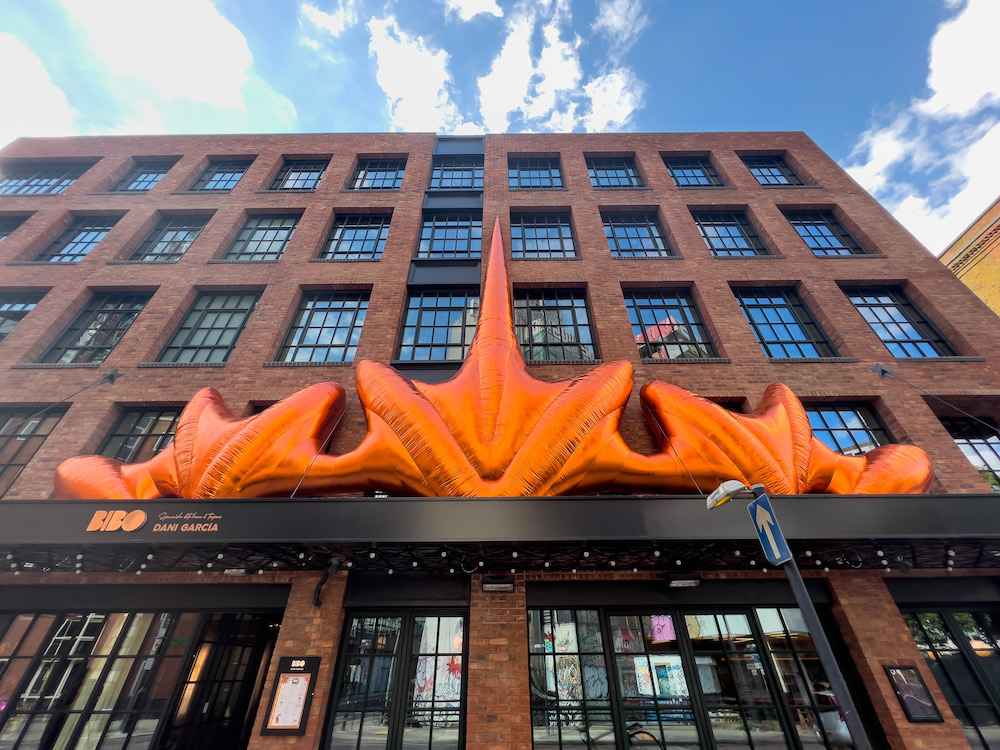
When creating spectacle, whether that’s in production or sculpture or garments, when do you know that something has been pushed far enough, that anymore will tip a delicate balance for the viewer or wearer? Is it an innate, thing? Or have you learned along the way?
It’s definitely a learning. I used to put all my cards on the table first, whereas now I’ve learnt the art of editing. For example, previously for a fashion week show all the pieces would be crazy, but we’d also have smoke, lasers, pyrotechnics firing off – we’d have all this other excess. It got to the point where, yes, it was spectacular, but you weren’t seeing the amount of work and craftmanship in the actual wearables because all the theatrics were overtaking them. So, we got rid of some of those so people can actually focus on the thing in front of them. Over time you develop an understanding of where to give and where to draw back.
Personally, what gives you hope for the future?
I’m not going to lie, I’m the king of putting my fingers in my ears and just getting on with designing. But, I think art has a huge part to play in in the future. Art is often dismissed and economics are prioritised, yet people are still going to galleries and concerts – what gives me hope is that they’re still absorbing it. Therefore, as artists, it means we can hopefully create work that changes people’s minds and the narrative at large. I’m going to keep creating, whether that’s installations, wearables or large-scale light installations. There’s lots of things in the pipeline.
Are you allowed to talk about any big projects coming up?
I’ve got my biggest project to date launching in two and a half weeks that’s been two years in the making. It’s part of the Blackpool illuminations, a gigantic installation called Odyssey comprised of six alien deity towers, a whole immersive experience with giant light sculptures and lasers that’s going to be on display for the next seven years between September to January.
That must be very gratifying, coming full circle.
It really is my dream project. I’m hoping it’s my first big step out the wearable world. I’ve wanted to do it for a long time, and now I’ve done it, it feels right, like what I should be doing.
